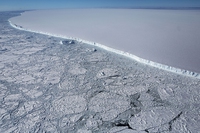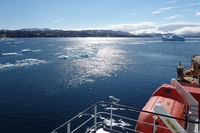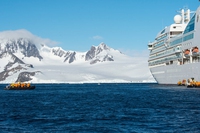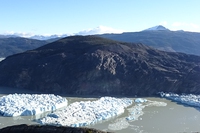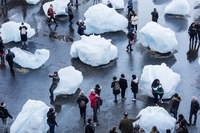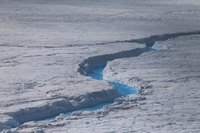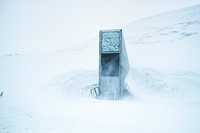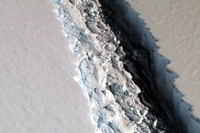
Antarctic sea ice reaches new record low
The extent of sea ice in Antarctica reached a new record low on 21st February 2023.
The extent of sea ice in Antarctica reached a new record low on 21st February 2023.
In 2017 the world’s largest iceberg, known as A68, detached from the Larsen C ice shelf and began drifting along the ocean. Today, it has almost entirely melted away.
The 4000-year-old Milne Ice Shelf, Canada’s last one, has collapsed due to temperatures 5 degrees higher than the 30-year average.
Antarctica is becoming more accessible, so much so that tourism has seen a 53 per cent increase in the last four years. And climate change is on of the reasons people visit the frozen continent.
In just 15 days, two icebergs that cover thousands of square kilometres broke off from Chile’s Grey Glacier. Such alarming events are taking place more frequently due to rising temperatures.
As the world discusses climate action at COP24, artist Olafur Eliasson’s Ice Watch installation shows us what’s happening in the Arctic. The ice blocks are on exhibit in front of London’s Tate. Until they’ll melt.
The oldest and thickest sea ice in the Arctic has broken up for the first time on record. The event has been caused by the unusual heat wave that hit the area this summer.
Hidden in the Arctic ice on a remote island in the Svalbard archipelago, the Global Seed Vault protects the Earth’s crop diversity. Now, 10 years after its construction, the vault must be made even more impregnable to withstand climate change.
When it comes to land travel the Eskimo people, also known as Inuit, have a good understanding of what distances mean as their land stretched over 13 time zones – yet according to their Elders, the greatest distance in one’s existence remains from one’s mind to one’s heart. “It is really true,” says Angaangaq Angakkorsuaq, an indigenous Eskimo-Kalaallit
It finally broke off. The iceberg A68, twice the size of Luxemburg, is no longer part of Antarctica’s Larsen C ice shelf, which could also collapse.
